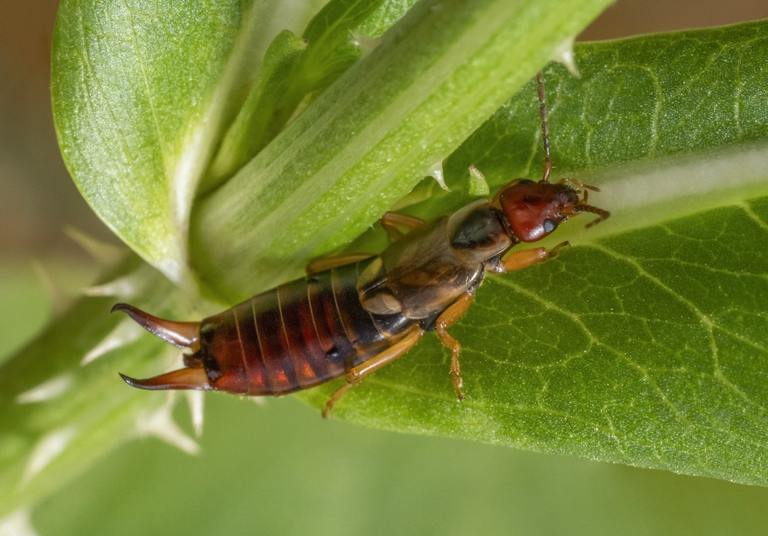Pincher Bugs: How to Keep Them Out of Your Home
Published: November 15, 2024

Introduction
Earwigs, more commonly referred to as a pincher bug, are small insects that often stir up big concern when found inside homes. These curious little creatures are most known for the pincers on their abdomen, which inspire both their nickname and their reputation. Despite their somewhat alarming appearance, pincher bugs are generally harmless. But their presence can indicate other underlying problems, and for homeowners striving for a pest-free living space, it’s important to understand how to manage and prevent infestations.
In this comprehensive guide, we explore everything you need to know about pincher bugs—from identifying their features to deterring them effectively, and how subtle professional assistance can make a meaningful difference.
What Does a Pincher Bug Look Like?
Pincher bugs are slender, elongated insects that usually range from 5 to 25 millimeters in length. Their most defining feature is a pair of curved pincers, or cerci, located at the end of their abdomen. Males typically have more pronounced, curved pincers, while females have straighter ones. These pincers are used primarily for defense and mating rituals, not for harming humans.
Their bodies are usually dark brown or reddish-brown, and they have long antennae that can extend half the length of their body. Although pincher bugs have wings, they rarely fly, preferring instead to scurry rapidly across surfaces.

What Does It Mean When You Find a Pincher Bug Inside?
Finding a pincher bug indoors is not uncommon, especially during hot, dry weather or heavy rains. These insects prefer moist environments and are commonly found hiding under mulch, leaves, or logs outdoors. When the conditions outside become unfavorable, they may venture indoors through small cracks and openings in search of cooler, damper spaces.
While they do not transmit diseases or cause significant structural damage, pincher bugs can become a nuisance. Their appearance alone is often enough to cause concern. More importantly, their presence may indicate an underlying issue with excess moisture in or around the home—a condition that could attract other pests or contribute to mold growth.
Simple DIY Methods to Manage Pincher Bug Infestations
Before reaching for the phone, many homeowners attempt DIY strategies to manage a pincher bug issue. Here are effective tactics that can reduce their presence and keep them from returning:
1. Reduce Moisture
Moisture is a key attractant for pincher bugs. By reducing dampness in and around your home, you can significantly cut down on their activity.
- Fix leaky faucets, spigots, and pipes.
- Ensure gutters and downspouts direct water away from the foundation.
- Use dehumidifiers in basements, bathrooms, or other high-humidity areas.
2. Eliminate Hiding Places
Remove the debris that pincher bugs love to hide beneath:
- Rake and dispose of fallen leaves, mulch, and grass clippings near your home.
- Keep firewood stored off the ground and away from walls.
- Trim vegetation that touches your home’s exterior.
3. Seal Entry Points
Keep pincher bugs from getting inside in the first place:
- Seal cracks and gaps around doors, windows, pipes, and vents.
- Install or replace weather stripping and door sweeps.
- Repair damaged screens and foundation vents.
4. Natural Repellents
A few natural deterrents can effectively discourage pincher bugs:
- Diatomaceous earth sprinkled around the perimeter creates a physical barrier that is deadly to many insects.
- Essential oils like eucalyptus, peppermint, or lavender diluted in water can be sprayed around baseboards and windows.
Understanding the Bigger Picture: Why does a Pincher Bug Matter
Despite their unsettling appearance, pincher bugs play a role in the ecosystem as decomposers and occasional predators of other small pests. However, they can become an issue when their population surges or they start venturing indoors.
The University of Florida Extension describes how earwigs (another name for pincher bugs) have developed an undeserved reputation due to myths and misconceptions. Meanwhile, Colorado State University’s agriculture guide offers management strategies for European earwigs, noting their tendency to invade homes when outdoor conditions shift.
And if you want to dig into the bizarre and unique side of these insects, The Nature Conservancy shares fascinating facts about the pincher bug’s biology and behaviors that may surprise even the most skeptical reader.

When to Consider Extra Help with a Pincher Bug Problem
While DIY methods are often successful in small-scale infestations, there are scenarios where a more strategic approach is beneficial. If you continue to see any kind of pincher bug indoors despite your efforts, or if the infestation appears to be worsening, it may be time to consider a broader solution.
Professionals can conduct detailed inspections and identify the environmental conditions contributing to the problem. They are trained to implement tailored, environmentally conscious treatments and recommend preventative changes that make your home far less appealing to these insects.
Rather than just treating the symptom, pest control services can help address the cause—often without any harsh or invasive techniques. It's about peace of mind and maintaining a home that feels clean, safe, and truly yours.
Final Thoughts on Pincher Bug Prevention
The key to avoiding unwanted encounters with pincher bugs lies in awareness and proactive prevention. By understanding what attracts them and implementing a few strategic changes around your home, you can significantly reduce the likelihood of a run-in.
These insects may look creepy, but they are ultimately just another part of our local environment. However, that doesn’t mean they should be part of your living space. Whether through simple DIY fixes or a more comprehensive plan, the goal remains the same—creating a comfortable, bug-free home.
For homeowners who prefer not to deal with the nuisance themselves, there’s always help just a call away—ready when you are, with the right tools, insights, and experience to keep pincher bugs where they belong: outside.